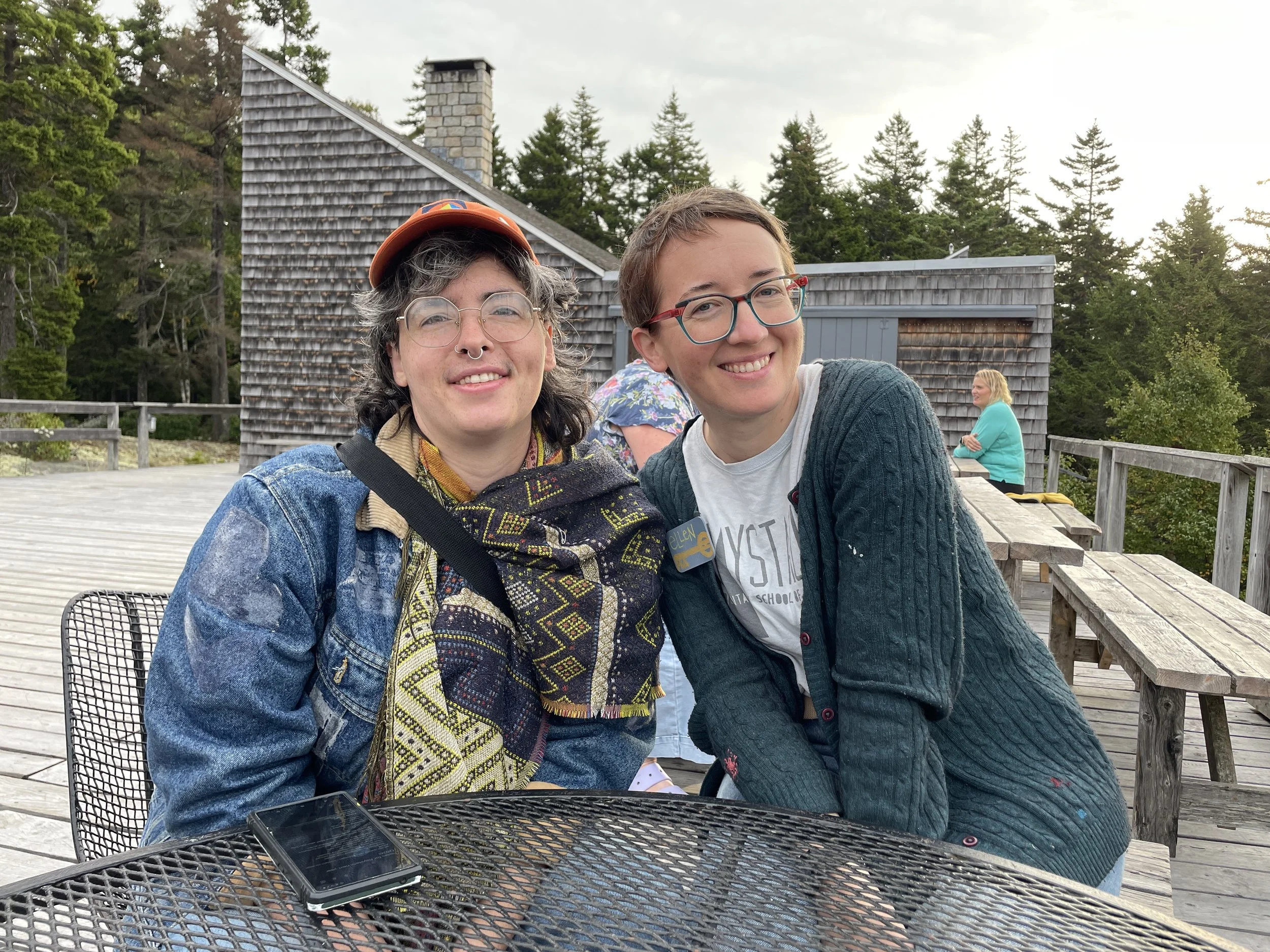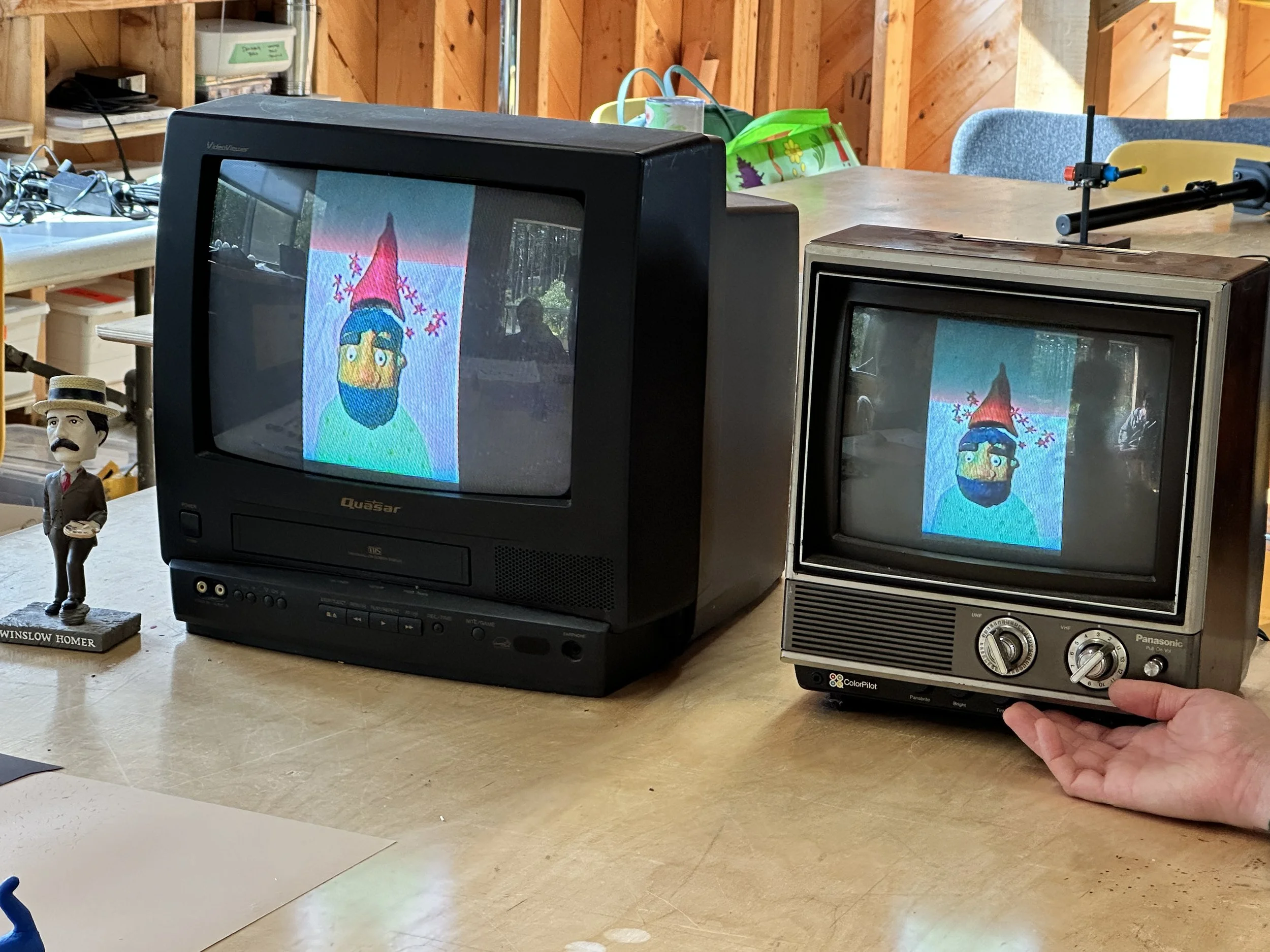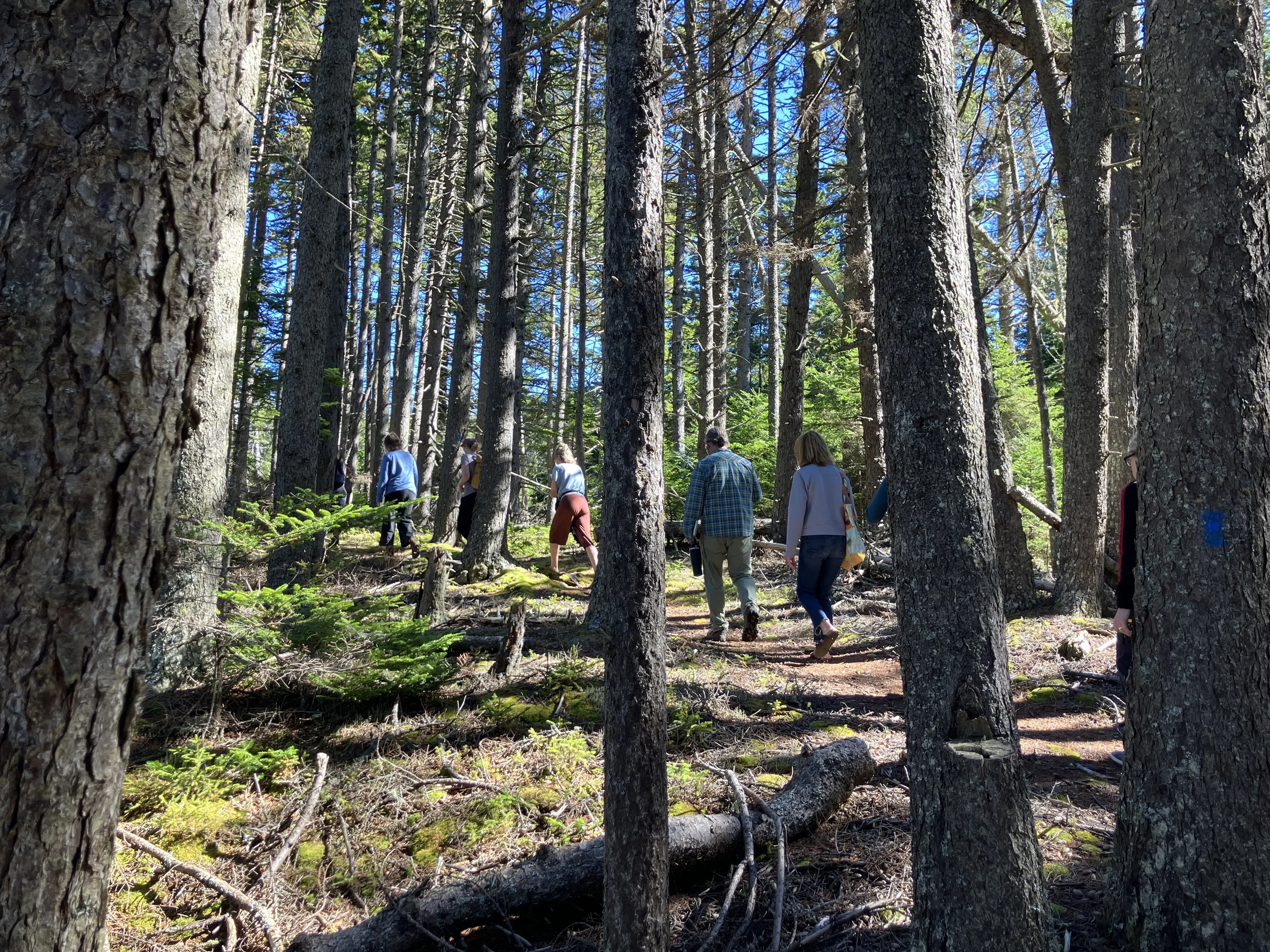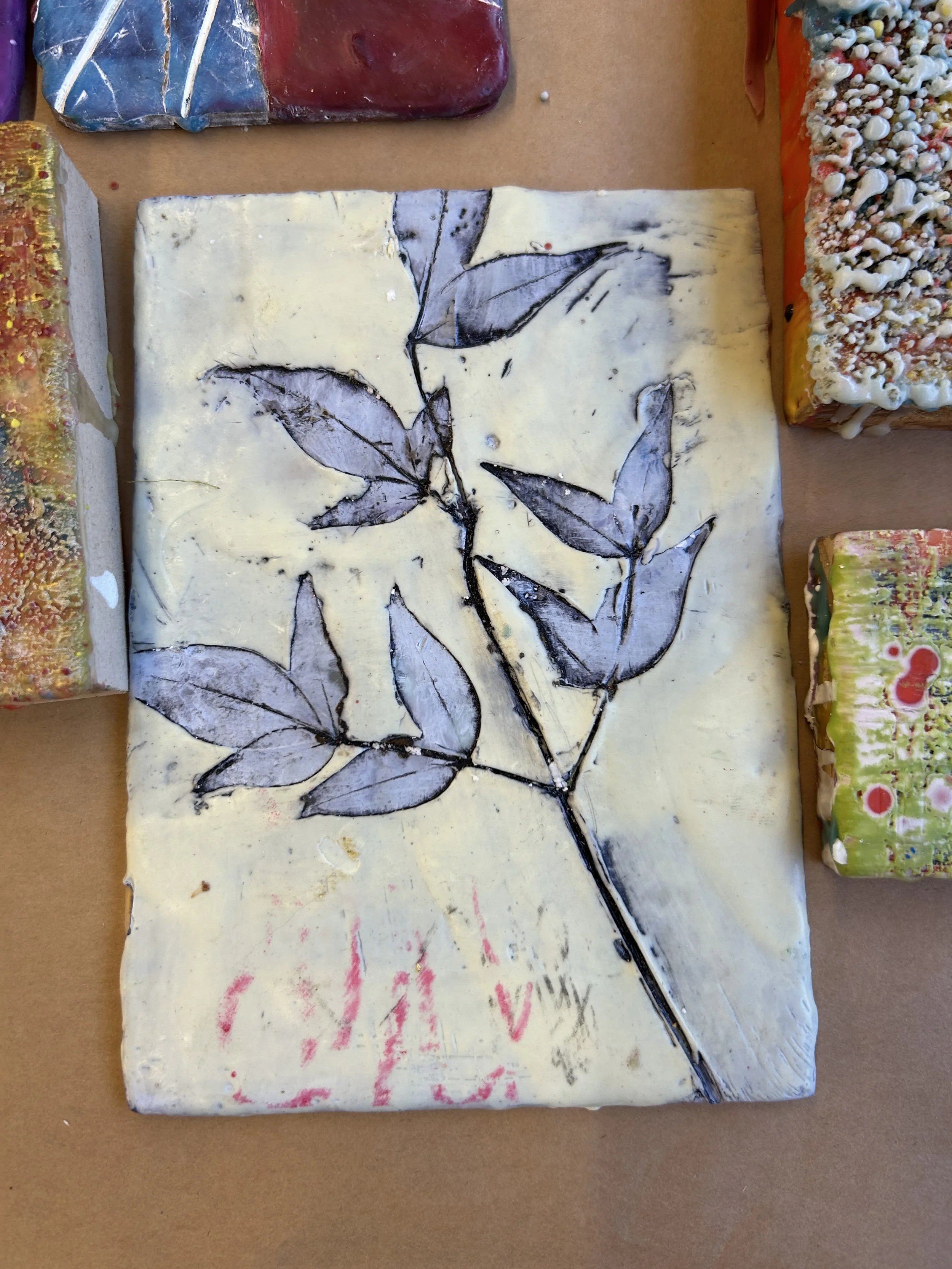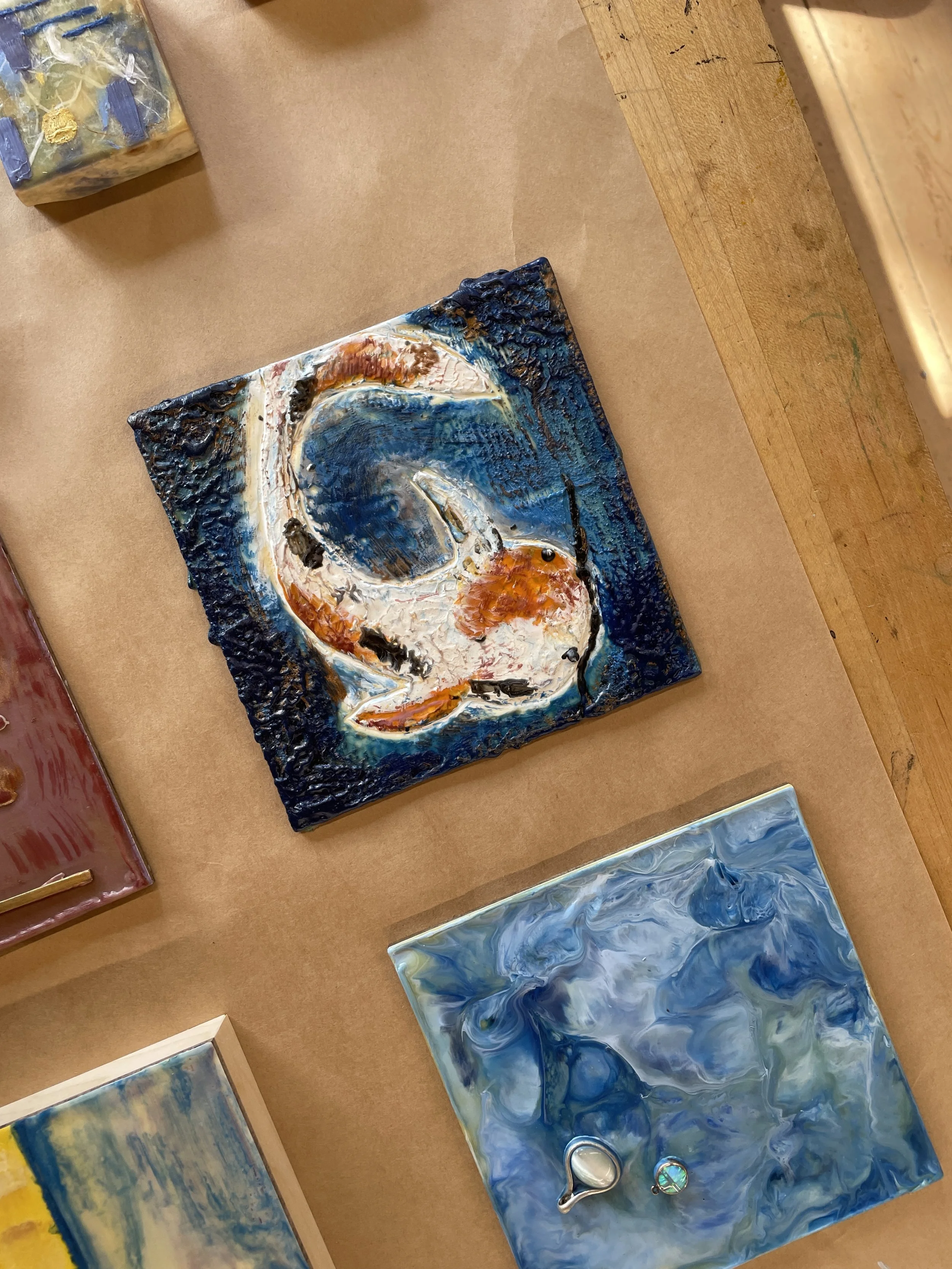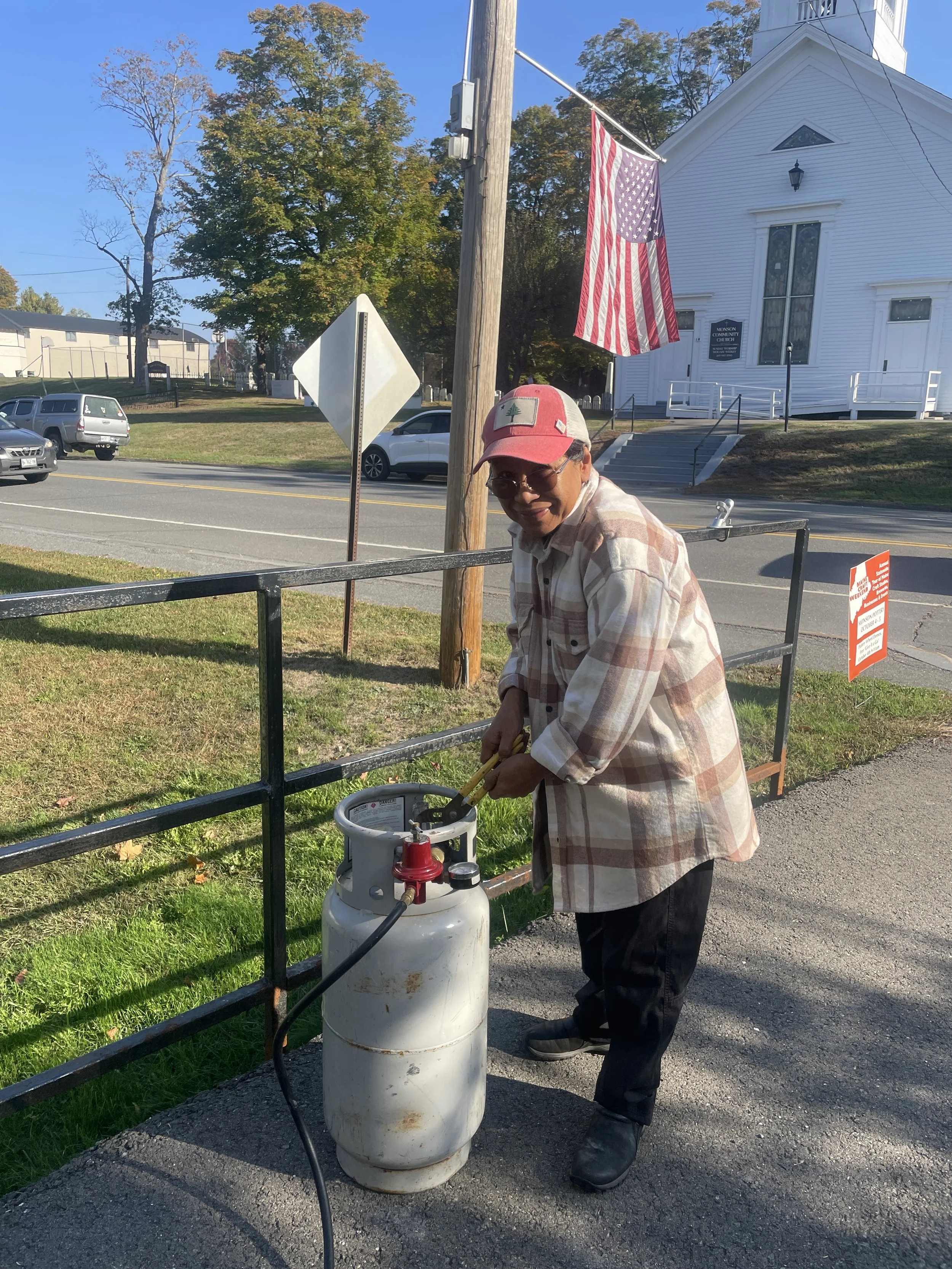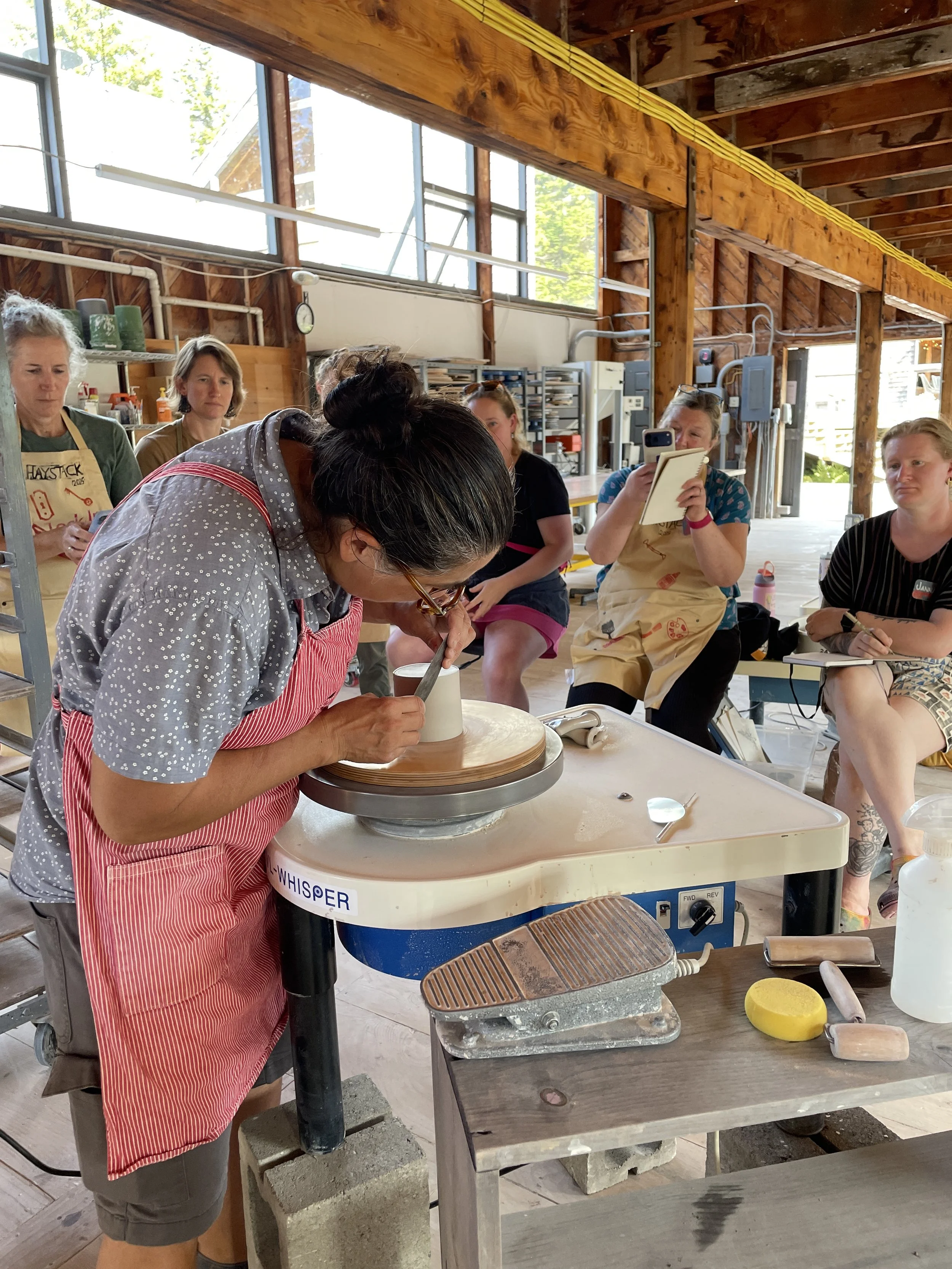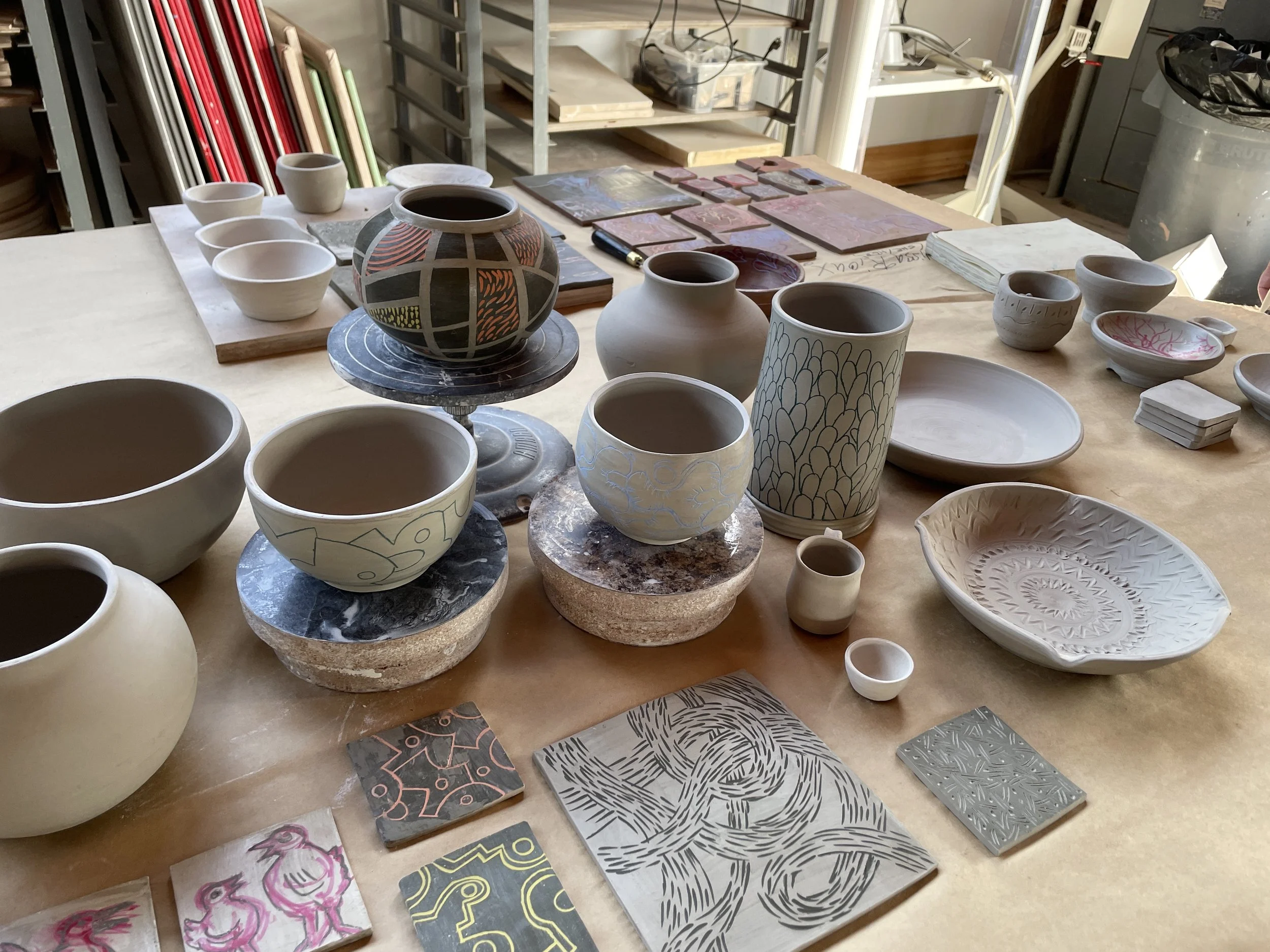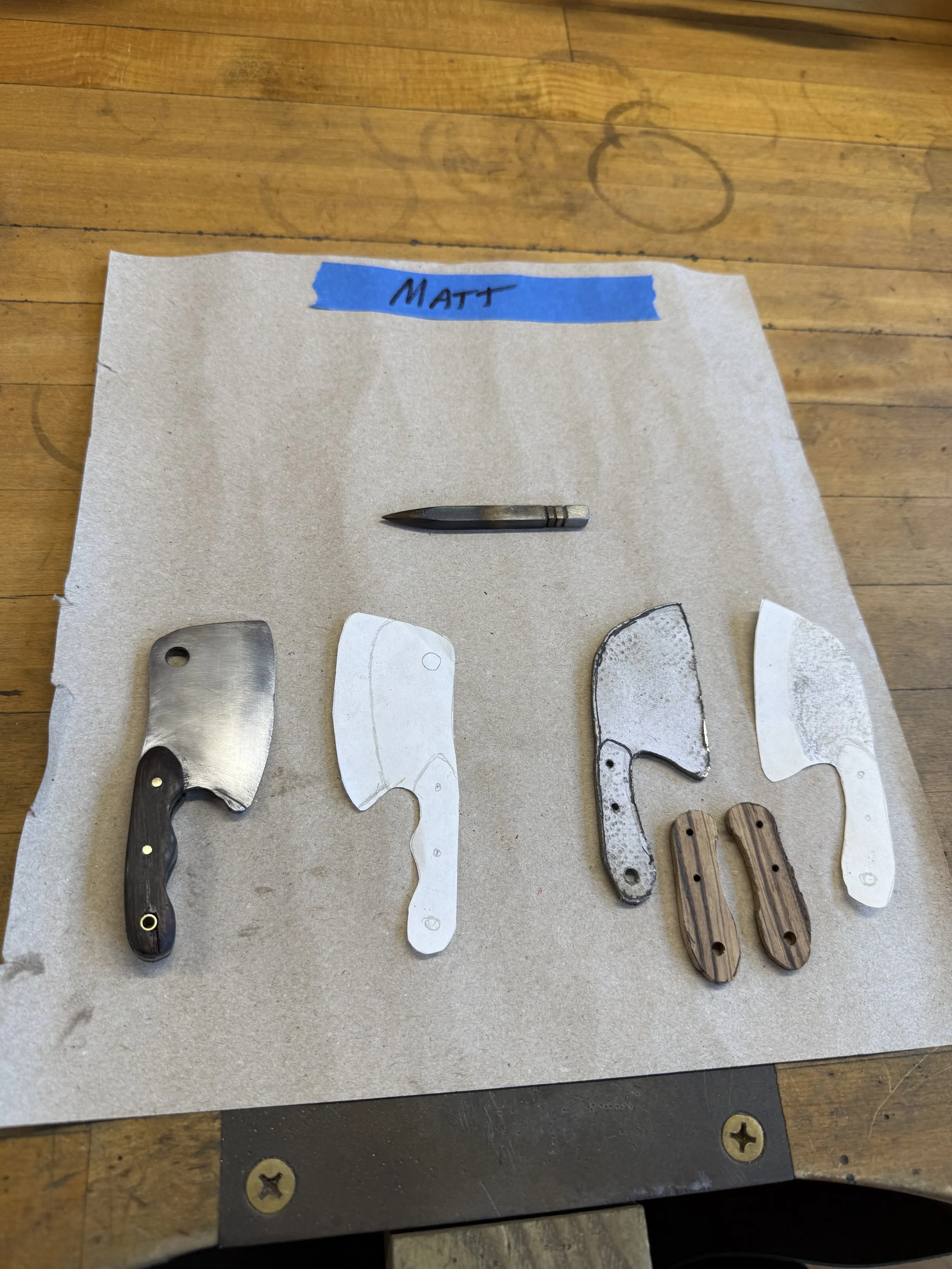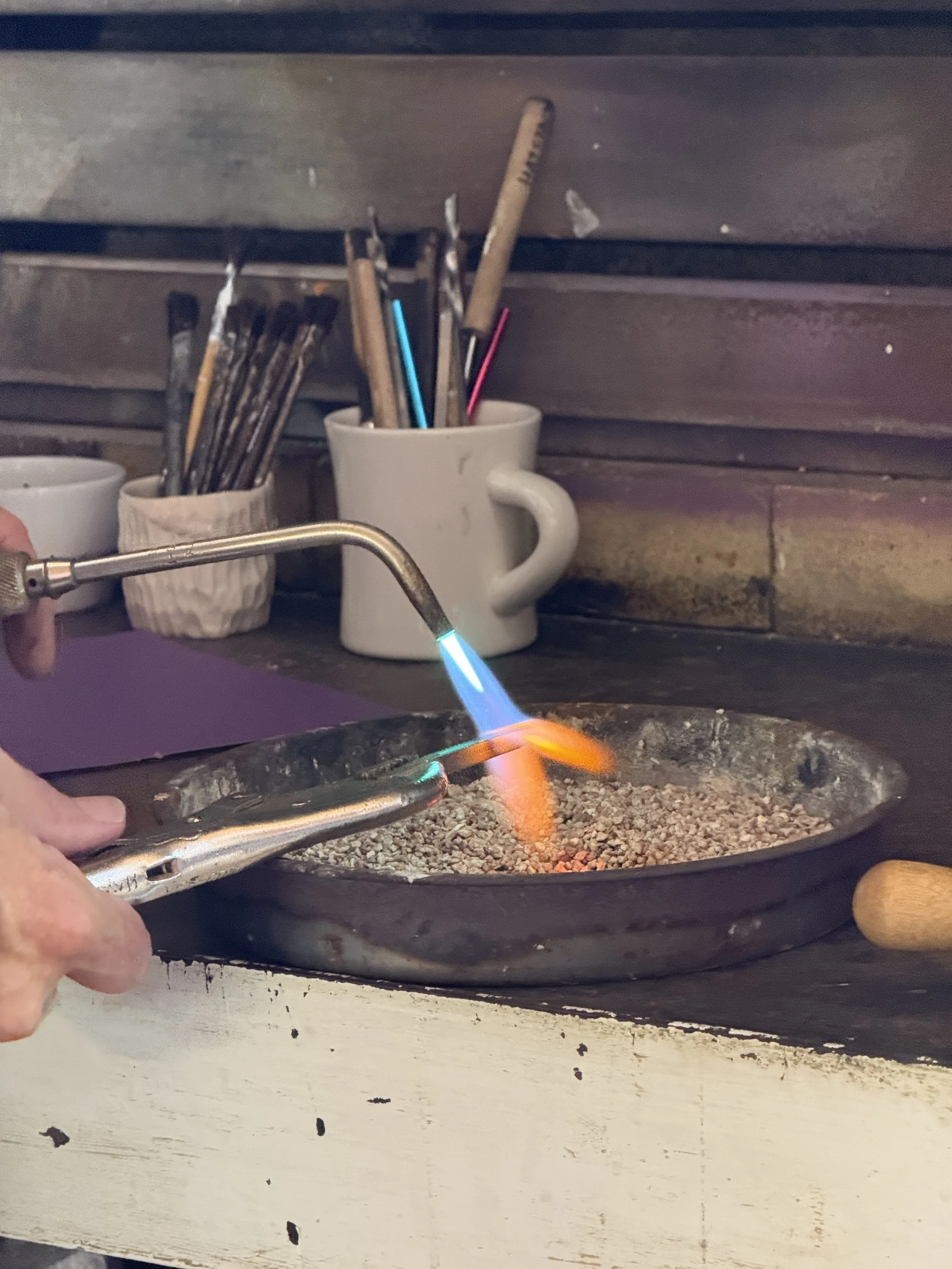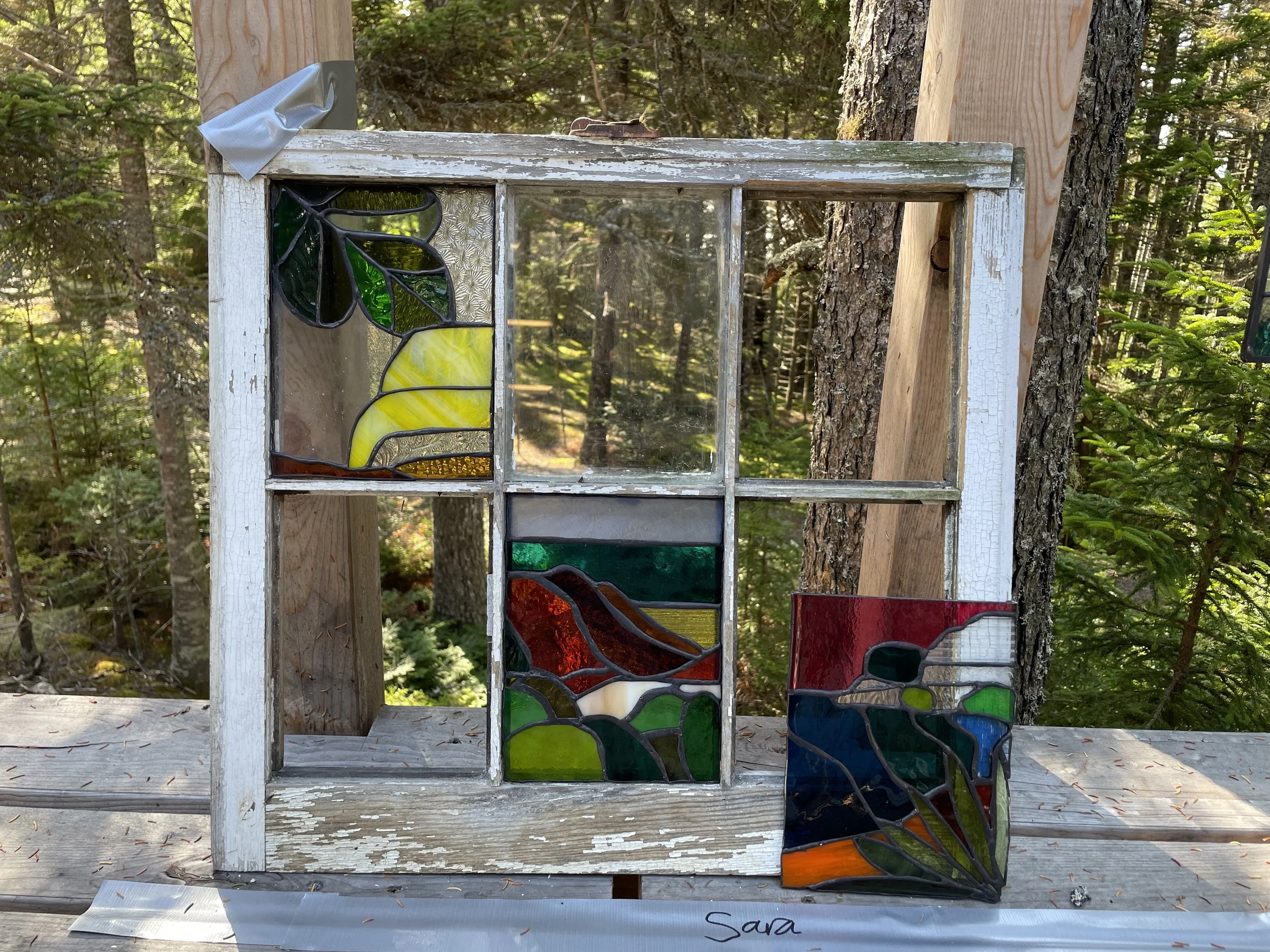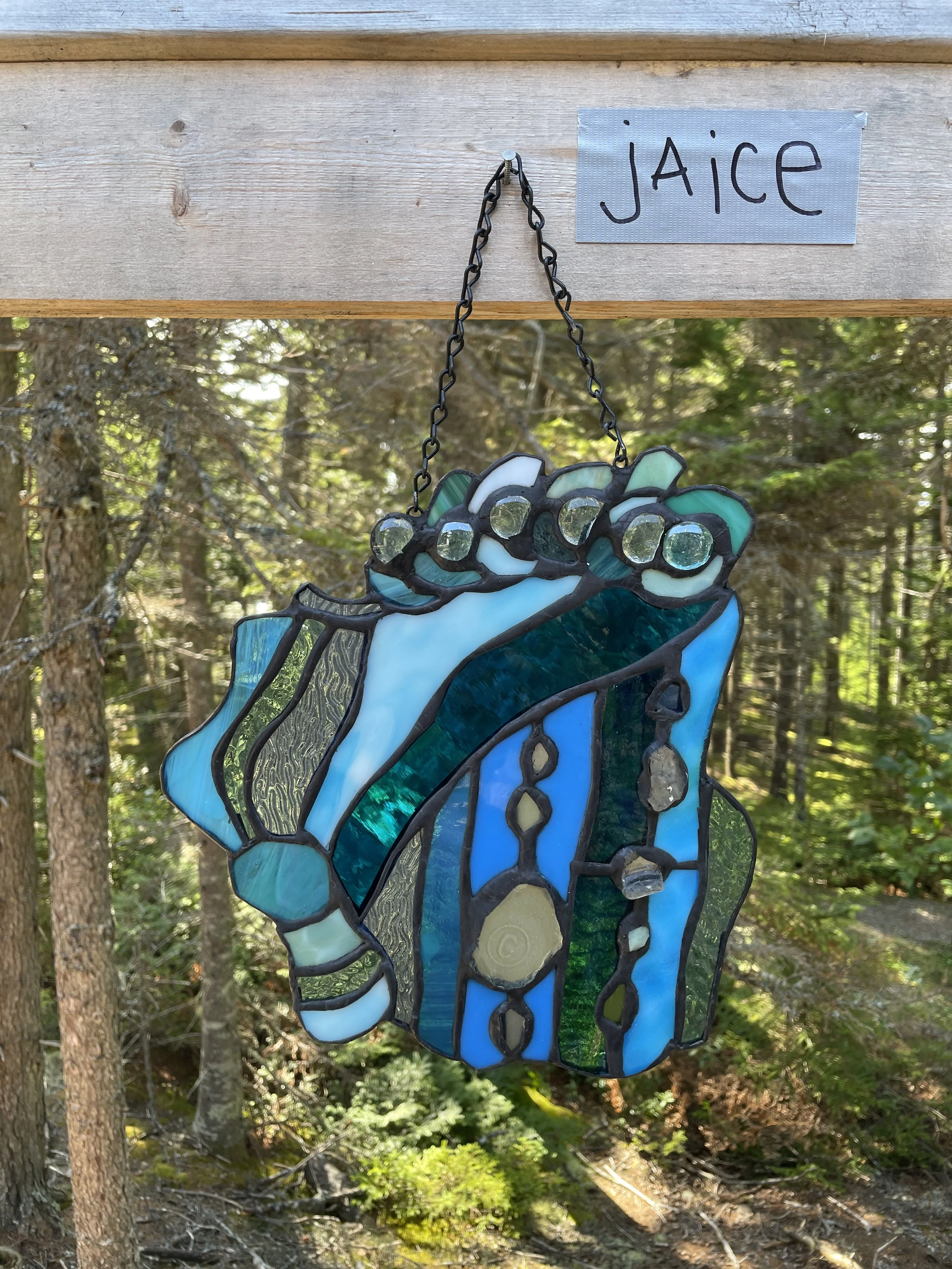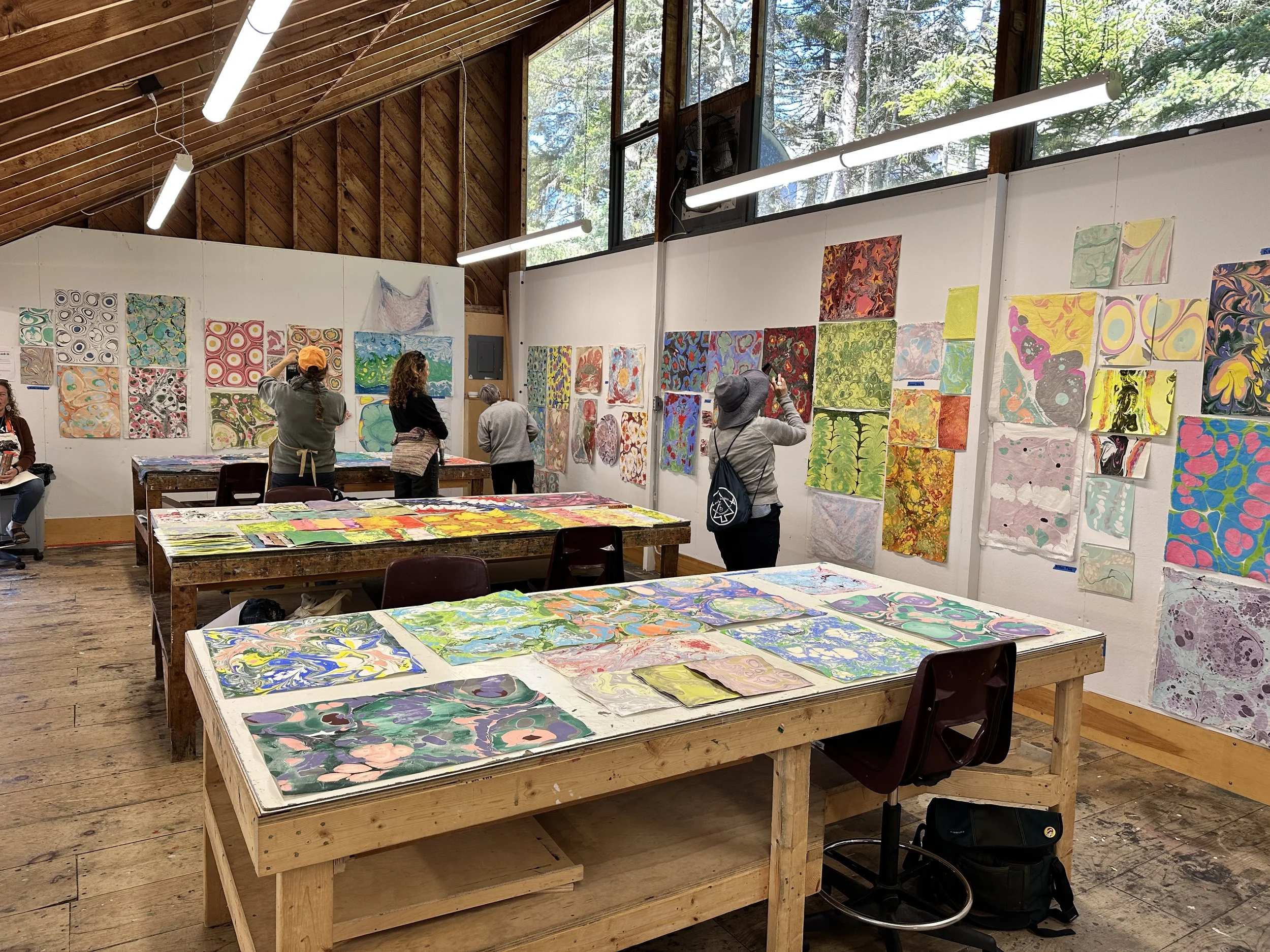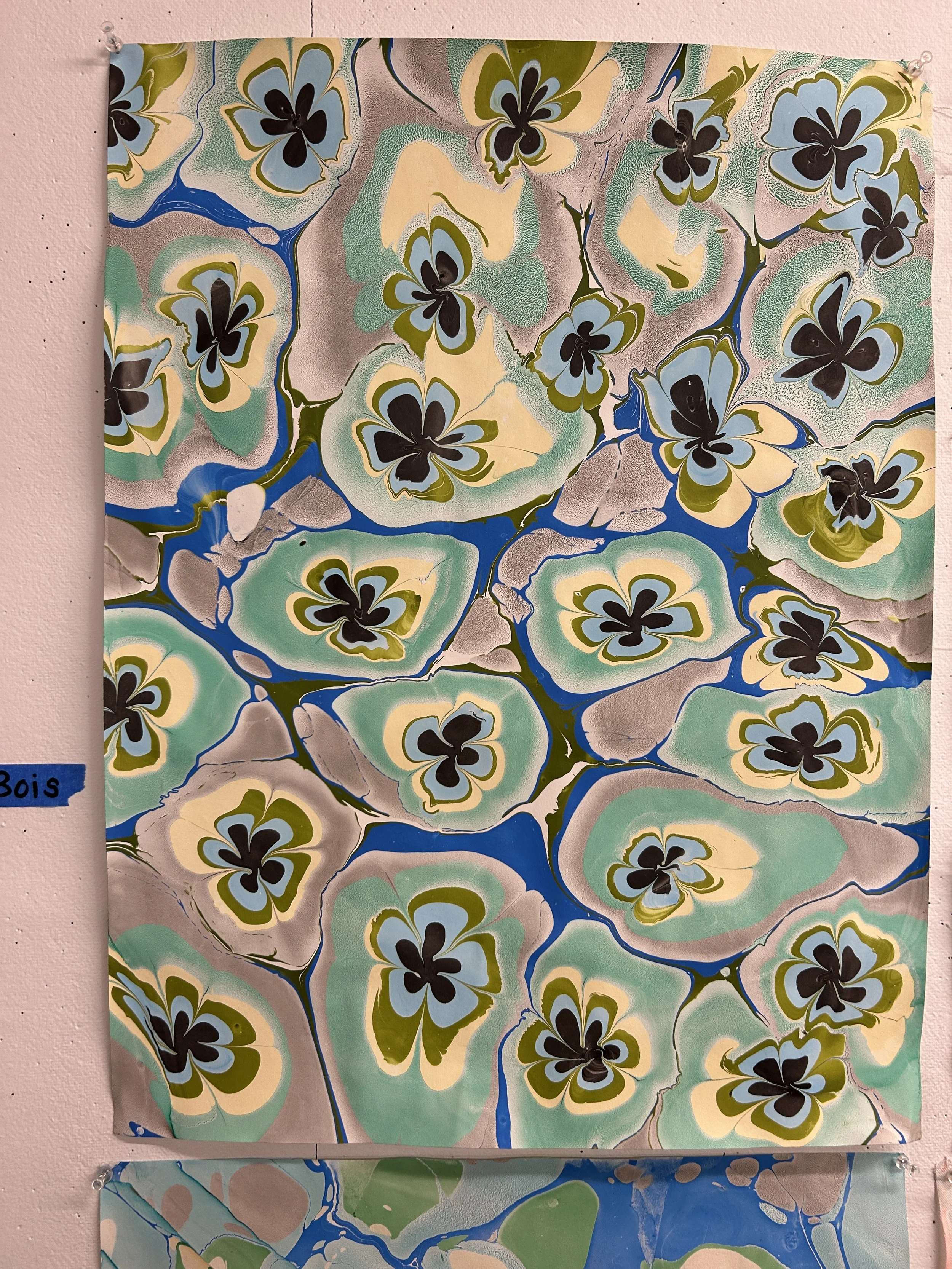Fall Conference
MAEA’s annual Fall Conference bridges boundaries between our personal and professional art realms. This is a chance to participate as artists in exciting workshops, immersed in every stage of creativity. It is also an opportunity to connect with fellow art teachers, meet with old friends, and make new ones. This creative and productive late-September weekend serves to invigorate us as we begin the school year. The next Fall Conference will take place September 25-27, 2026. Details coming this spring.
Happy potters in Monson 2023
The pewter team at Haystack 2023
Our 2025 Fall Conference is behind us.
Explore highlights below:
Our students go through slang like we wish they would go through clean socks. One thing that they’ve been saying this year that has endured, and that we love, is “Lock In.” It describes a mindset of intense, focused creation. We’ve always come to our fall conference seeking that — now we have a term to describe it. Join us as we Lock In and start the school year off right!
2025 Haystack Co-Chairs: Nat Shacklett + Ellen Hodgkin
Bobbi Tilkens-Fisher’s students pose in front of their tapestries
Educators take a moment to enjoy the water
Ayumi Horie poses with her students
2025 Workshops
Shawn Brewer: Animate Anything
— HAYSTACK
Animate Anything is a crash course in the foundations of stop motion animation. The class will spend the weekend exploring various animation techniques and tools such as claymation, stop motion, and cut paper animation. You will learn foundational skills such as squish and stretch, morphing, pacing and timing, and animating techniques such as straight ahead or in betweening. You’ll leave understanding fps, camera operation for stop motion, and principals such as easing in and out. The workshop will culminate in a tiny film festival where the instructor will bring his collection of vintage TV’s and display the class work throughout the studio!
Students are expected to come to class with their preferred sketchbook and drawing tools, one object they would never leave without home with (and surely would bring to class with them), and a smartphone with the Stop Motion Studio App installed on it. Students will need to bring their own craft paper and scissors if they wish to try papercraft animation. Note: please bring wipes and gloves if you have any sensitivities to non toxic oils in the clay. Also, wipes are a good idea to keep your clay clean.
Biography
Shawn Brewer (he/him) is an artist living in South Portland, Maine. He graduated from Maine College of Art with a degree in Printmaking and minor Public Engagement. After graduating he worked as an artist mentor at The Art Department, an art studio and gallery in Portland working with artists with developmental disabilities. Through the programming of The Art Department he was introduced to filmmaking and animation, hooked on the medium of storytelling. In 2019 he was hired as a creative at Dock Square Studio, a small commercial animation and photography studio in Kennebunkport, Maine. Shawn’s role as creative has him building sets, shooting stop motion videos, and editing footage for clients such as LEGO, Gillette, Le Creuset, L.L. Bean, and amongst other clients. In 2023 he co-founded Animation Planet Festival, a regional film festival celebrating short animated films from Northern New England creators (that includes Maine, New Hampshire, and Vermont). They were awarded a Kindling Fund grant for their 2024 program, and held a sold out screening of 30 short animated films from all over Northern New England.
Sophie Cangelosi: The Shape of Attention — A workshop in sensory awareness and intuitive making
— Haystack
In an increasingly fast paced world that demands more and more of our attention, slowing down and hearing our planet and inner voice is vital. This workshop invites participants to be slow and present with their earthly surroundings and their creative instincts through playful, embodied, and process-driven exploration. We’ll begin each session with a sensory walk through Haystack’s campus—tuning into natural textures, sounds, and movement—to gather material and emotional cues for studio work. From bird song and ocean waves to found textures and quiet memories, these observations will guide our gestures and spark new pathways into embodied making.
By the end of the weekend, participants will leave with a body of exploratory work, renewed trust in their intuitive voice, and adaptable strategies for fostering experimentation, responsiveness, and risk-taking in their own classrooms.
Biography
Sophie Cangelosi (b. 1993, she/they) is a painter and illustrator living and working in Rockland, Maine. Since receiving her BFA from Maine College of Art, she has been included in exhibitions at Page Gallery, Camden, ME; NOTCH8, Portland, ME; 82Parris, Portland, ME; Alice Gauvin Gallery, Portland, ME; BCA Center, Burlington, VT; and BUOY, Kittery, ME, among others. They have attended a residency at the Stephen Pace House and they were a Fellow at Pickwick Independent Press in 2016. Grants and awards include Communication Arts and American Illustration.
Margaret Dwyer: Watercolor Discoveries
— Monson
Monson Conference Chair Lynn Bustard
Dive into the depths of watercolor and learn how unconventional and traditional techniques work together to create luminous, dramatic results. An overview of brushwork, color choices, and the timing of techniques will be demonstrated. Along with some watercolor “tricks” and experiments that will surprise you. We’ll do some studies of how these techniques can be used for painting various subject matter that include nature studies, land/seascapes, and playful abstracts. Then go in the direction that inspires you most. Develop your work in a process- oriented way that does not conform to a preconceived outcome. Discover a world of ideas to pursue during and beyond this watercolor intensive.
Biography
Margaret Dwyer holds a BFA and MFA in visual art. Her thesis work focused on trauma and its effect on women and creativity. This evolved into an ongoing study of how the unconscious processes trauma. She works with a variety of mediums, but watercolor is her favorite. Her paintings have been recognized in numerous juried national and international exhibitions and have been published in fine art books and magazines that include: “Splash, America’s Best Watercolors “ (North Light Books); “How Did You Paint That?” (International Artist Books); “American Artist Magazine”; “The Artist’s Magazine”; “Southwest Art Magazine”; and “Manhattan Arts Magazine.”
Margaret was recently the Artist in Residence for Marsh-Billings-Rockefeller National Historical Park in Woodstock, VT for three years, followed by a residency at Woodstock’s Billings Farm Museum. She has extensive experience teaching watercolor throughout New England at art centers, galleries, schools, and her own studios. Currently, she teaches watercolor at Sanctuary Arts in Eliot, ME, Kittery Art Association, York Art Association, and Seacoast Art Association in Exeter, NH. In 2024, Margaret was a facilitator for the MAEA at Haystack in Deer Isle, ME.
The imagery in her work responds to and reflects life experience, represented in landscapes, water scenes, portraiture, nature studies, and abstracts. Margaret also loves to develop experimental watercolor techniques. Her vibrant paintings often combine unconventional methods with traditional ones, branding her work with a unique style. “Being a visual artist in New England allows me to explore diverse themes and unique environments. I am deeply inspired by its history, scenic drama, and sense of wonder I feel when I am here. I love being a studio artist, but I also have a passion for teaching. Opening the world of watercolor to people has been and continues to be a purposeful mission for me. Ideas and artistic methods are constantly in motion in my studio, and it is a joy to share that with others.”
Hélène Farrar: Ancient Medium, Encaustics: Possibilities of Working with Molten Wax
— Haystack
This dynamic workshop will lead participants in the instrumental basics of encaustic painting including: paint application, fusing technique and tools, possibilities in texture, transparency and opacity capacity, various line work and more. Participants will also be introduced to the capacity of encaustics to develop mixed media works with demonstrations in embedding found objects, collage, textile, stencil use and relief mold making and casting. Class time will be divided between demonstrations and individual work time. We will also touch on proper studio ventilation, wax safety, and how to “finish” artworks in terms of framing and care. Students will leave with multiple finished pieces, the understanding of proper studio set-up and the minimal set-up for classroom use. Please note: this workshop has an additional studio fee of $50.
Biography
Hélène Farrar has taught and worked in the visual arts for twenty five years while actively exhibiting in commercial, nonprofit and university galleries in New England, New York City, Pennsylvania, Italy, and England. Farrar has a BA in Studio Art from the University of Maine and a Masters of Fine Art Degree in Interdisciplinary Arts from Goddard College in Vermont. Her paintings have most recently been accepted into curated exhibits at the Southern Vermont Art Center, Cape Cod Community College, Fuller Craft Museum, the Saco Museum, the University of New England Art Gallery, and Twiggs Gallery in New Hampshire. Farrar is represented by Archipelago Fine Arts in Rockland. Her work as an educator has brought her across the state of Maine including the Farnsworth Art Museum, Haystack Mountain School of Crafts, Waterfall Arts, and the Coastal Maine Botanical Gardens. Her teaching has also brought her as far as Sedona, Arizona, Tuscany, Italy, and the International Encaustics Conference in Provincetown, Massachusetts. Hélène is the President of New England Wax. She has recently relocated to Rockland with a studio in Tenants Harbor.
Jemma Gascoine: Raku Means Joy
— Monson
We shall throw small, thoughtful objects 'off of the hump' adapting and augmenting them. They will dry and be bisque fired overnight, ready to be glazed late Saturday afternoon. Saturday morning we shall go over the ingredients that make up the white crackle glaze, rainbow luster glaze and copper carbonate love-child glaze from Watershed. We shall then talk through the process and logistics of the raku firing scheduled for early Sunday morning. On Sunday, we will be firing outside with propane, plunging the vessels into a reduction chamber (garbage can with combustible materials such as cedar chips), starving them of oxygen to pull the color out of the metal oxides in the glazes and onto the surface of the pot whilst yanking the carbon out of the clay body, turning the non-glazed parts black. The process of Raku firing is fast, hot, and smokey. The group has to work as a team in order to maneuver the hot pots safely into the reduction chamber before it cools too much to ignite the combustibles. Scrubbing the soot off of the pots comes after the work has had a chance to cool off in buckets of cold water. Then comes the big iridescent reveal!
Biography
Jemma Gascoine has been creating and selling her ceramic sculpture and her utilitarian work since 2001, when she moved from London, England, to Blanchard Township on the Piscataquis River. Initially she studied with the renowned London potter Barry Guppy in the Collaborative Arts Department of the Arts Council of England. Barry Guppy was taught by former Bauhaus student, Lucie Rie. Gascoine had a solo sculpture exhibition at the University of Maine Museum of Art in 2012, has shown and sold work at the CMCA and, most recently, sold work out of MCA's Maine Craft Portland on Congress Street. In 2015 she founded Monson Pottery in order to help meet the demand for clay workshops and as a retail outlet to sell her work, other artists’ work, and her former students’ work (she also administers, manages and curates the art shows in the Gascoine Gallery).
She has been teaching clay to all ages since 2005. She taught Adult Education classes for 11 years for Dover-Foxcroft and Bangor's Adult Education program and has led many classes for homeschool, middle school, and high school students. She has facilitated workshops for art teachers via the Maine Art Education Association for the past four years, taught veterans through the VAST program, and led many workshops for Monson Arts Artists-in-Residence.
Gascoine enjoys raku firings these days, which can be more about texture as well as iridescent color. She’s been throwing on a potter's wheel for 25 years and feels fortunate that she still loves clay. You can discover more about her and her works at www.jemmagascoine.com.
Ayumi Horie: Crisp Drawings and Fuzzy Bowls
— Haystack
In this workshop, we will explore the process of dry throwing on a wheel and then how to use mishima to inlay colored slip drawings into the surface of pots. Dry throwing is a wheel throwing technique invented by Ayumi that uses no water and is more akin to carving on a wood lathe. The surface can be stretched into a fuzzy texture or can be ribbed smooth. It is also a technique that handbuilders often take to easily. Mishima is a traditional technique that can create crisp, detailed drawings that can be layered with more slips or with glaze. Both mishima and dry throwing lend themselves to variation and different levels of skill.
Biography
Ayumi Horie is a full-time studio potter in Portland, Maine. She has a BA from Mount Holyoke College, a BFA from Alfred University, and an MFA in ceramics from the University of Washington. Horie is recognized as a leader in craft, through her work pushing the ceramics field to be more expansive and politically engaged. She has won numerous honors including: Maine Craft Artist Award; Distinguished Fellow in Craft grant from United States Artists in 2015; and Honorary Member of NCECA (National Council for Education in the Ceramic Arts) in 2020 for her contribution to the field. Most recently, she seeded the vision and helped create the Craft Archive Fellowship at the Center for Craft to support scholarship and archival research around underrepresented and non-dominant craft narratives. Horie’s work is in numerous public and private collections, including the Museum of Art and Design and the Farnsworth Art Museum. She has taught and lectured nationally and internationally for the past 25 years and is currently President of the Board at Haystack Mountain School of Crafts.
Tim McCreight: Knifemaking Made Simple
— Haystack
Using standard jewelry tools, participants will make a handsome and functional knife. Everyone will make a practical fixed blade knife that can be used in the kitchen, workshop or garden. Techniques covered include sawing, drilling, filing, riveting, and heat treatment, all of which will be explained in commonsense language that even an engineer can understand. Knowledge of jewelry skills is helpful but not required.
Biography
Tim McCreight is a designer, teacher, author and metalsmith. He received a BA from The College of Wooster and a Master of Fine Arts from Bowling Green State University. He taught full time for 25 years, first in Massachusetts and then at Maine College of Art. Tim has taught hundreds of workshops throughout the US and in Canada, Japan, Mexico, and the UK. He has written 20 books, produced a half dozen videos, and has served on several boards including the Society of North American Goldsmiths and Haystack Mountain School of Crafts. He runs a publishing company called Brynmorgen Press.
Jim Nutting: Incorporating Found Objects into a Stained Glass Panel
— Haystack
Students will be creating a stained glass panel up to a suggested 16" square or circle using the copper foil method of stained glass. Students will be taught how to design the panel, cut the glass, grinding, foiling, soldering, cleaning and finishing the stained glass panel. Students may bring found objects that they wish to include. Examples could include reasonably flat objects such as seashells, glassware, dishes, keys, beach glass, crystals, minerals, photographs and postcards.
Biography
Jim Nutting, the owner of Maine Art Glass in Lisbon Falls, has been working in glass for over 45 years. He has completed many small to large stained glass commissions for individuals and businesses. He has restored windows for many churches, including the complete restoration of all stained glass windows in the Bates College Chapel.
Jim grew up in Millinocket, moved to Auburn, and graduated from Bates College with a biology degree. He spent 25 years working at Central Maine Medical Center, working his way up from dishwasher (while a student) to corporate development director at Central Maine Healthcare until 1997, when he decided to go full time as a stained glass artist. He joined his partner Nel Bernard who started Maine Art Glass in the 1970s. They bought the former Sts. Cyril and Methodius Catholic church in Lisbon Falls and converted it to the present day Maine Art Glass.
Jim has been teaching glass art for over 35 years. He has taught stained glass, both copper foil and lead came, fusing and slumping, sandblasting, mosaics, restoration, and painting and design.
Jim's biology background is very evident in his art. Many of his original works depict wildlife and nature. As a biologist his art tends to be realistic and accurate. Jim also incorporates seashells into many designs, windows and lampshades he creates.
Jim is the consummate collector of natural history artifacts. He has spent a lifetime collecting butterflies and insects, seashells, fossils, minerals, skulls, and taxidermy. At Maine Art Glass, Jim has also created a world-class display of tropical and local butterflies and insects, all stunningly displayed in stained-glass display cases and hand-made shadow boxes. This collection, known as The Butterfly and Insect Museum at Maine Art Glass, is now being expanded to include a massive seashell collection.
Claire Reynes: Marbling on Paper and Fabric
— Haystack
This workshop will provide an introduction to the fascinating and historied art of water marbling. Marbling is a process in which paints are floated on a liquid surface and worked into patterns using different methods and tools. The marbled pattern is then transferred to paper, fabric, or object.
We will begin the weekend with Japanese marbling or Suminagashi, which requires the marbler to “lock in” and let go. It is a meditative art form where the maker is most successful when they recognize water, air, and ink as collaborators. We will then explore Western marbling and play with different approaches to applying color and pattern to the marbling vat. Each maker will have a marbling vat and various tools to use to discover different effects on the marbling bath as well as learn some basic combing patterns that can be built upon for more complex designs. Over the weekend we will print our designs on various types and sizes of paper as well as cotton canvas fabric. The workshop will close with an oversized community marbling vat where we will get to collaborate together on some large fabric prints.
Biography
Claire Reynes is an artist and educator whose work spans handmade paper, water marbling, and sewing, drawing inspiration from nature and the human body. Through her studio, Tempered East, she creates small-batch marbled papers, fabrics, and functional objects that celebrate color and pattern. Alongside her studio practice, she teaches introductory marbling workshops, sharing her expertise with new and experienced artists alike.
Reynes holds a BFA in Art Education from the University of Illinois at Champaign-Urbana. She spent seven years teaching at Mark Twain Elementary in Chicago, where she helped shape arts programming beyond the classroom. As a Community of Practice Co-Facilitator with the CPS Department of Arts Education, she worked to support professional learning among art educators and was a co-founder and coordinator of the citywide CPS K-12 Visual Arts Exhibition, showcasing student creativity across Chicago. In 2021, she was awarded a Fund for Teachers travel grant to travel to Michoacan and Oaxaca to study with local Mexican artists whose focus was on land art and traditional artmaking practices with non-traditional materials or approaches.
Now based in South Portland, Maine, she continues to explore materiality and the process of playful creation through her marbling and papermaking practice. She teaches and facilitates artmaking experiences as often as she can both in Maine and beyond.
Bobbi Tilkens-Fisher: Modern Tapestry Weaving
— Haystack
Tapestry weaving is not a new craft form by any means, but the endless variations one can employ while weaving can lead to exciting, modern takes on this traditional craft! In this workshop, students will learn (or review) the basics: fibers, assembling a loom, warping, stitches and knots, shapes, space and finishing techniques. We will create woven wall hangings that push the boundaries of this 2D art form.
Biography
I am a modern fiber artist interested in exploring and blurring the dimensional boundaries between tapestry weaving and sculpture. The creation of my work often requires a physicality that challenges my own capabilities as a 50-year-old woman and two-time cancer survivor. This ultimately results in works that feel like extensions of my various states of being, not only physically, but mentally as well.




